Vietnam War was one of the longest wars in which the United States took part. Only the Afghanistan War (2001-2021) was longer. The Vietnam War began in 1957 and ended in 1975. Vietnam, a small country in Southeast Asia, was divided at the time into the Communist Democratic Republic of Vietnam, commonly called North Vietnam, and the non-Communist Republic of Vietnam, commonly called South Vietnam. North Vietnamese and Communist-trained South Vietnamese rebels sought to overthrow the government of South Vietnam and to eventually reunite the country. The United States and the South Vietnamese army tried to stop them, but failed.

The Vietnam War was actually the second phase of fighting in Vietnam. During the first phase, which began in 1946, the Vietnamese fought France for control of Vietnam. At that time, Vietnam was part of the French colonial empire in Indochina. The United States sent France military equipment, but the Vietnamese defeated the French in 1954. Vietnam was then split into North and South Vietnam.
United States aid to France and later to non-Communist South Vietnam was based on a Cold War policy of President Harry S. Truman. The Cold War was an intense rivalry between Communist and non-Communist nations. Truman had declared that the United States must help any nation challenged by Communism. The Truman Doctrine was at first directed at Europe and the Middle East. But it was also adopted by the next three presidents, Dwight D. Eisenhower, John F. Kennedy, and Lyndon B. Johnson, and applied to Indochina. They feared that if one Southeast Asian nation joined the Communist camp, the others would also “fall,” one after the other, like what Eisenhower called “a row of dominoes.”
The Vietnamese Communists and their allies called the Vietnam War a war of national liberation. They saw the Vietnam War as an extension of the struggle with France and as another attempt by a foreign power to rule Vietnam. North Vietnam wanted to end U.S. support of South Vietnam and to reunite the north and south into a single nation. China and the Soviet Union, at that time the two largest Communist nations, gave the Vietnamese Communists war materials but not troops.
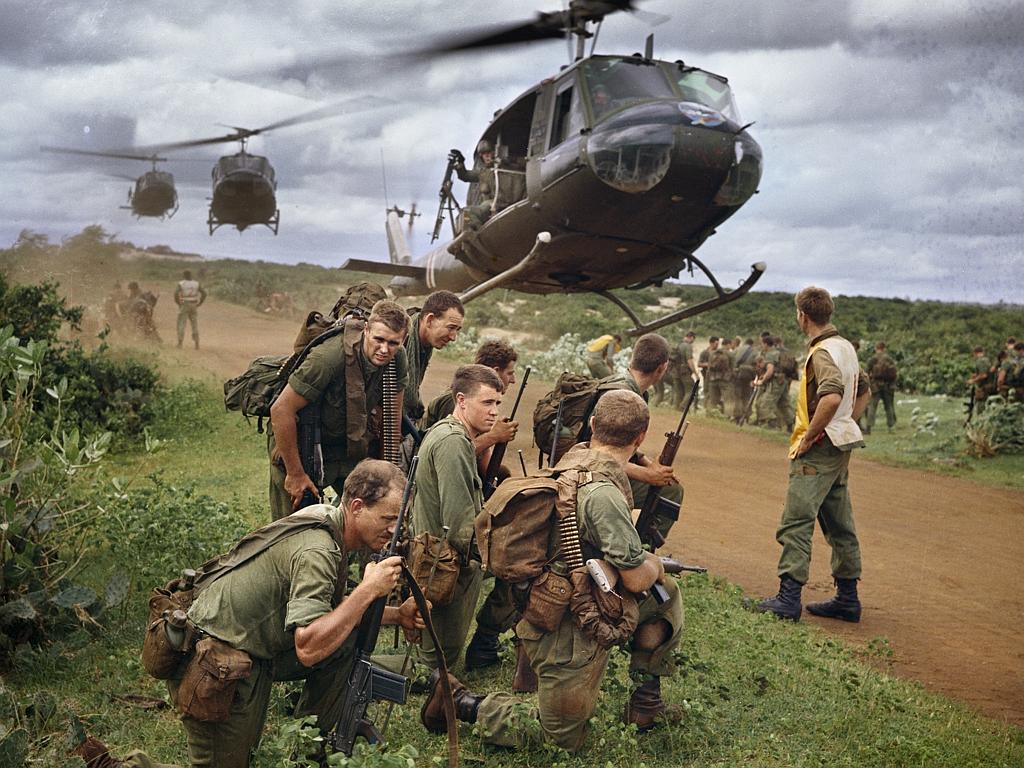
The Vietnam War had several stages. From 1957 to 1963, North Vietnam aided rebels opposed to the government of South Vietnam, which fought the rebels with U.S. aid and advisory personnel. From 1964 to 1969, North Vietnam and the United States did much of the fighting. Australia, New Zealand, the Philippines, South Korea, and Thailand also helped South Vietnam. By April 1969, the number of U.S. forces in South Vietnam had reached its peak of more than 543,000 troops. By July, the United States had slowly begun to withdraw its forces from the region. 
In January 1973, a cease-fire was arranged. The last American ground troops left Vietnam two months later. The fighting began again soon afterward, but U.S. troops did not return to Vietnam. South Vietnam surrendered on April 30, 1975, as North Vietnamese troops entered its capital, Saigon (now Ho Chi Minh City).
The Vietnam War was enormously destructive. Military deaths reached about 1.3 million, and the war left much of Vietnam in ruins.
Just before the war ended, North Vietnam helped rebels overthrow the U.S.-backed government in nearby Cambodia. After the war, North Vietnam united Vietnam and helped set up a new government in nearby Laos. The U.S. role in the war became one of the most debated issues in the nation’s history. Many Americans felt U.S. involvement was necessary and noble. But many others called it cruel, unnecessary, and wrong. Today, many Americans still disagree on the goals, conduct, and lessons of U.S. participation in the Vietnam War.
Background to the war
The Indochina War.
In the late 1800’s, France gained control of Indochina—that is, Vietnam, Laos, and Cambodia. Japan occupied Indochina during most of World War II (1939-1945). After Japan’s defeat in 1945, Ho Chi Minh, a Vietnamese nationalist and Communist, and his Vietminh (Revolutionary League for the Independence of Vietnam) declared Vietnam to be independent. But France was determined to reclaim its former colonial possessions in Indochina. In 1946, war broke out between France and the Vietminh. It finally ended in 1954, following the conquest of the French garrison of Dien Bien Phu by Vietminh forces in May. In July, the two sides signed peace agreements in Geneva, Switzerland.

The Geneva Accords provided that Vietnam be temporarily divided into northern and southern zones at the 17th parallel. The accords also called for national elections in 1956 to reunify the country.
The United States had provided aid to the French in Indochina since 1950. President Harry S. Truman had been convinced that such assistance was necessary in part because of the Communist take-over of China in 1949. Truman feared a Vietminh victory in Vietnam would lead to a Communist take-over of Indochina as part of a larger Communist plan to dominate Asia. This fear was so great that Truman ignored pleas by Ho for U.S. aid against French colonialism and for an alliance with the United States.
The divided country.
After 1954, Ho strengthened the rule of his Communist government in the Democratic Republic of Vietnam, which became known as North Vietnam. He suppressed non-Communist political parties. He also enacted land reforms and established legal equality between men and women. Ho hoped the elections of 1956 would provide him with the means with which to peacefully reunify the country under his revolutionary government. These elections never occurred.
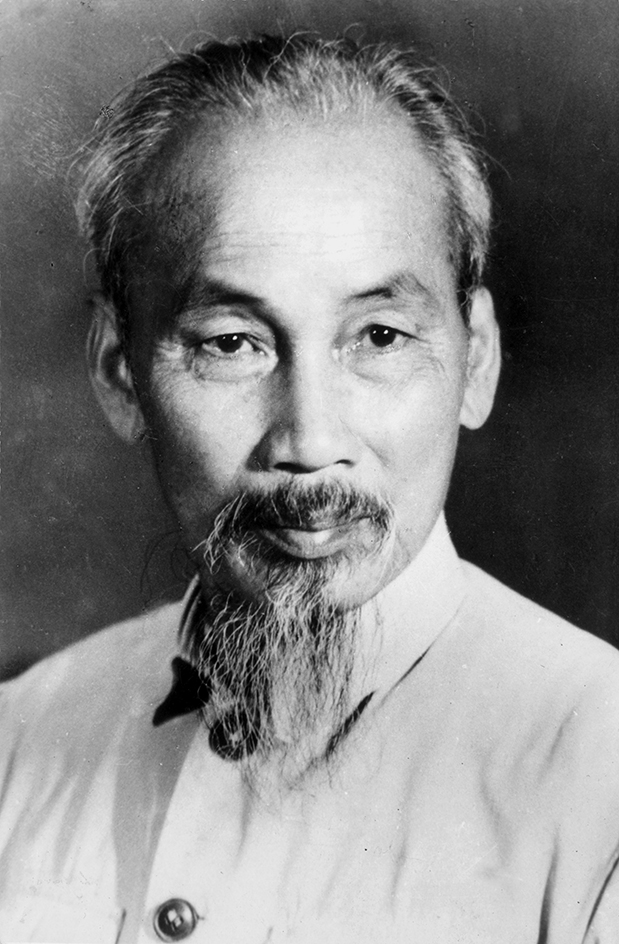
The United States moved to make the division of Vietnam permanent by helping leaders in the southern half to form a non-Communist Republic of Vietnam, also known as South Vietnam. Ngo Dinh Diem, who had once refused a place in Ho’s government and vigorously opposed any Communist influence in his country, became president of South Vietnam in 1955. With the approval of the United States, he refused to go along with the proposed nationwide elections scheduled for the following year. He argued that the Communists would not permit fair elections in North Vietnam. Most experts believe, however, that Ho was so popular that he would have won the elections under any circumstances. President Dwight D. Eisenhower provided economic aid and sent several hundred U.S. civilian and military advisers to assist Diem.
Early stages of the war
The Viet Cong rebellion.
Diem suppressed all rival political groups in his effort to strengthen his government. But his government never achieved widespread popularity, especially in rural areas, where his administration did little to ease the hard life of the peasants. Diem became increasingly unpopular in 1956, when he ended local elections and appointed his own officials down to the village level, where self-government was an ancient and honored tradition. From 1957 to 1959, he sought to eliminate members of the Vietminh who had joined other South Vietnamese in rebelling against his rule. Diem called these rebels the Viet Cong, meaning Vietnamese Communists. These rebels were largely trained by the Communists, but many were not Communist Party members.
Loading the player...Ho Chi Minh and North Vietnamese soldiers
Although North Vietnam had hoped to achieve its goals without a military conflict against the United States or the South Vietnamese government, it supported the revolt against Diem from its early stages. In 1959, as U.S. advisers rushed aid to South Vietnam by sea, North Vietnam developed a supply route to South Vietnam through Laos and Cambodia. This system of roads and trails became known as the Ho Chi Minh Trail. Also in 1959, two U.S. military advisers were killed during a battle. They were the first American casualties of the war.
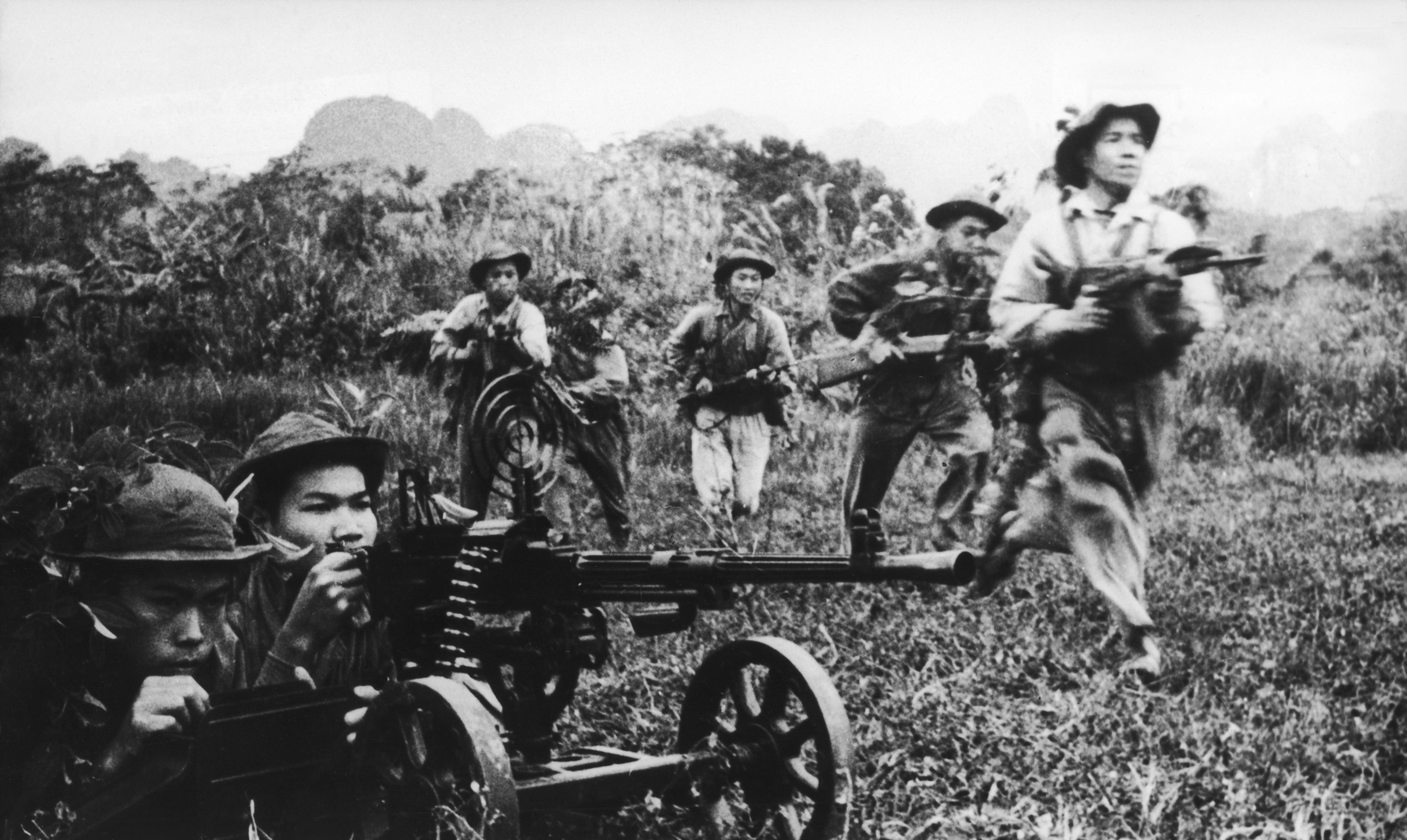
By 1960, discontent with the Diem government was widespread, and the Viet Cong had about 10,000 troops. In 1961, they threatened to overthrow Diem’s unpopular government. In response, President John F. Kennedy greatly expanded economic and military aid to South Vietnam. From 1961 to 1963, he increased the number of U.S. military advisers in Vietnam from about 900 to over 16,000.
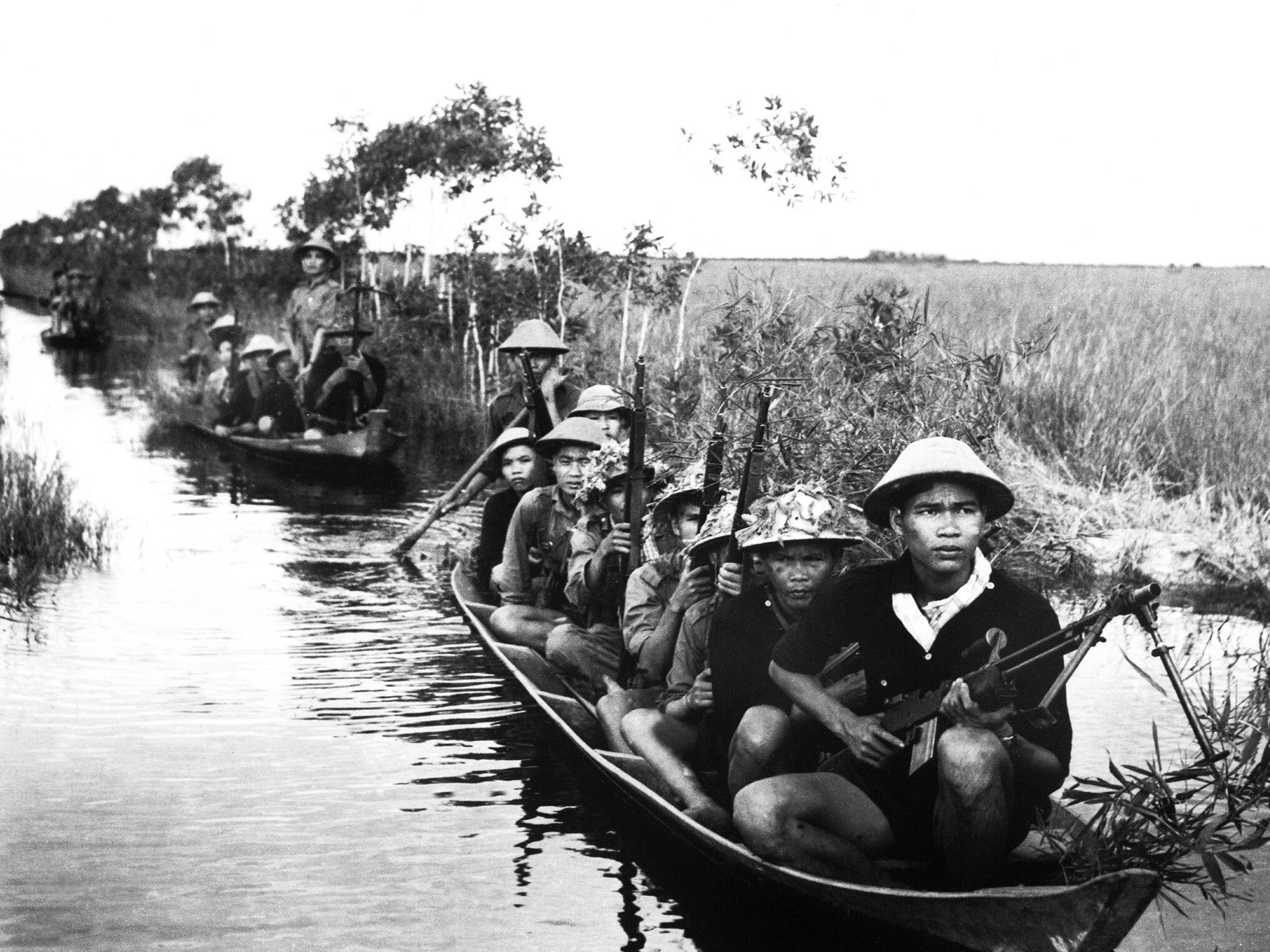
The Buddhist crisis.
In May 1963, widespread unrest broke out among Buddhists in South Vietnam’s major cities. The Buddhists, who formed a majority of the country’s population, complained that the government restricted their religious practices. Buddhist leaders accused Diem, a Roman Catholic, of religious discrimination. They claimed that he favored Catholics with lands and offices at the expense of local Buddhists. The government responded to the Buddhist protests with mass arrests, and Diem’s brother Ngo Dinh Nhu ordered raids against Buddhist temples. Several Buddhist monks set themselves on fire as a form of protest.
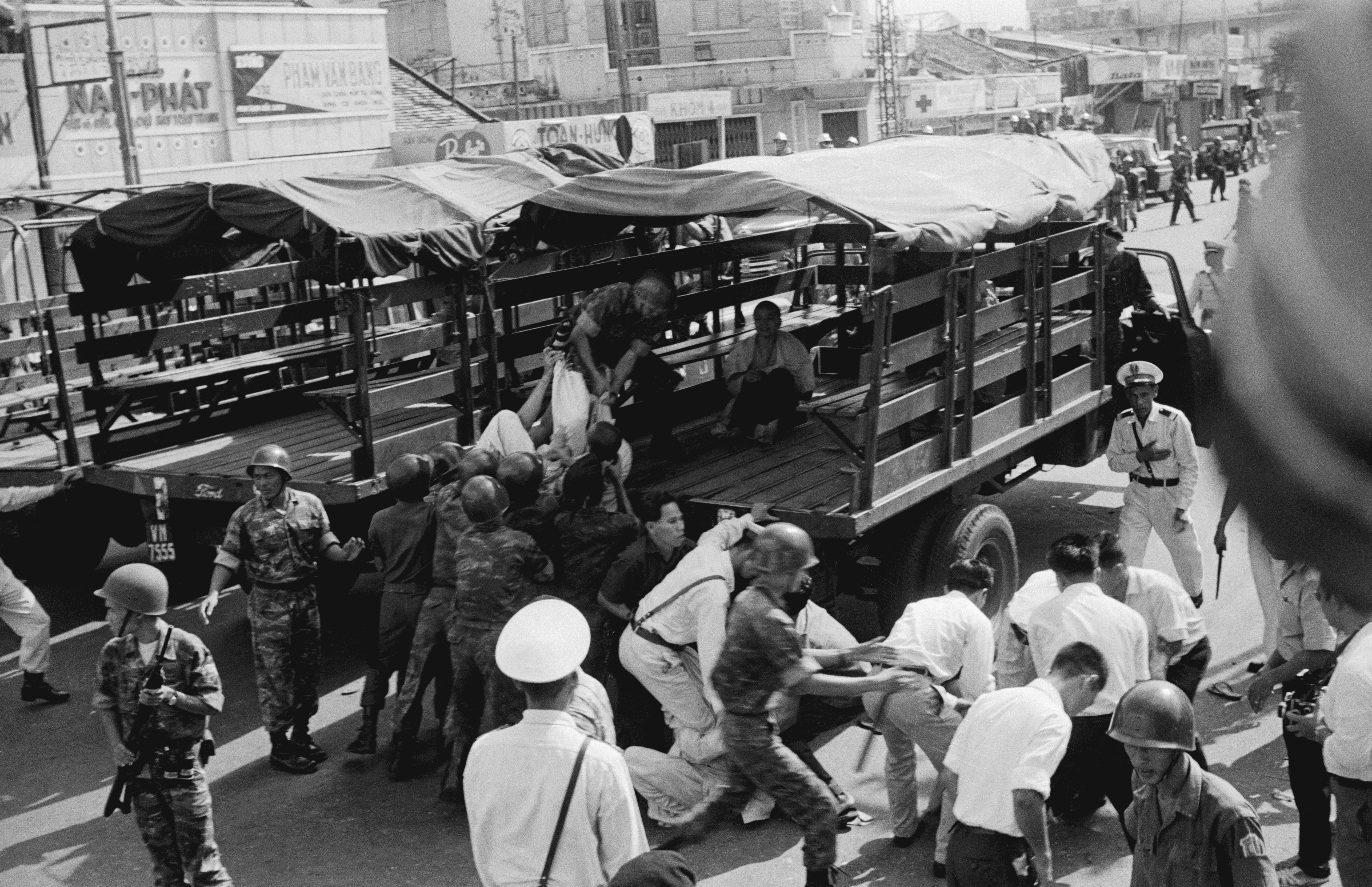
The Buddhist protests aroused great concern in the United States. Kennedy urged Diem to improve his dealings with the Buddhists, but Diem ignored the advice. Kennedy then supported a group of South Vietnamese generals who opposed Diem’s policies. On Nov. 1, 1963, the generals overthrew the Diem government. Diem and Nhu were murdered.
The fall of the Diem government set off a period of political disorder in South Vietnam. New governments rapidly succeeded one another. During this period, North Vietnam stepped up its supply of war materials and began to send units of its own army into the south. By late 1964, the Viet Cong controlled up to 75 percent of South Vietnam’s population.
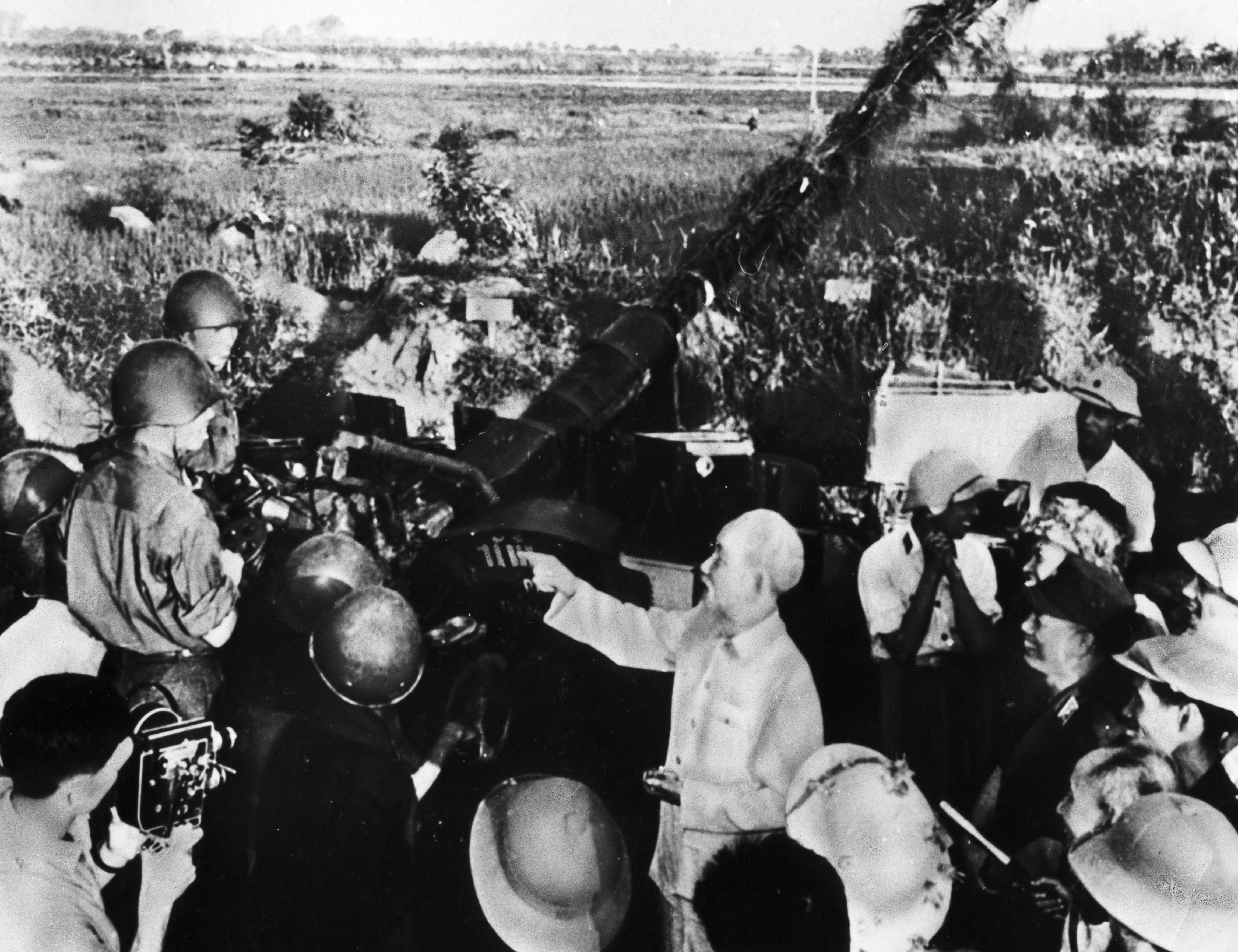
The Gulf of Tonkin incident.
In 1964, President Lyndon B. Johnson approved secret South Vietnamese naval raids against North Vietnam. Just after one of these raids, on Aug 2, 1964, North Vietnamese torpedo boats attacked the U.S. destroyer Maddox, which was monitoring the impact of the raid off the coast of North Vietnam in the Gulf of Tonkin. Johnson warned the North Vietnamese that another such attack would bring “grave consequences.” On August 4, he announced that North Vietnamese boats had again launched an attack in the gulf, this time against the Maddox and another U.S. destroyer, the C. Turner Joy. 
Some Americans doubted that the August 4 attack had occurred, and it has never been confirmed. Nevertheless, Johnson ordered immediate air strikes against North Vietnam. He also asked Congress for power to take “all necessary measures to repel any armed attack against the forces of the United States and to prevent further aggression.” On August 7, Congress approved these powers in the Tonkin Gulf Resolution. The United States did not declare war on North Vietnam. But Johnson used the resolution as the legal basis for increased U.S. involvement. In March 1965, he sent a group of U.S. Marines to South Vietnam, the first American ground combat forces to enter the war.
The fighting intensifies
The opposing forces.
The war soon became an international conflict. United States forces rose from about 60,000 in mid-1965 to a peak of over 543,000 in 1969. They joined about 800,000 South Vietnamese troops and a total of about 69,000 troops from Australia, New Zealand, the Philippines, South Korea, and Thailand. The North Vietnamese and the Viet Cong had over 300,000 troops, but the exact number is unknown.
Loading the player...Bombing a Vietnamese village
The two sides developed strategies to take advantage of their strengths. The United States had the finest modern weapons and a highly professional military force. Its field commanders were General William C. Westmoreland from 1964 to 1968 and, afterward, Generals Creighton Abrams and Frederick Weyand. The United States did not try to conquer North Vietnam. Instead, American leaders hoped superior U.S. firepower would force the enemy to stop fighting. The United States relied mainly on the bombing of North Vietnam and “search and destroy” ground missions in South Vietnam to achieve its aim.
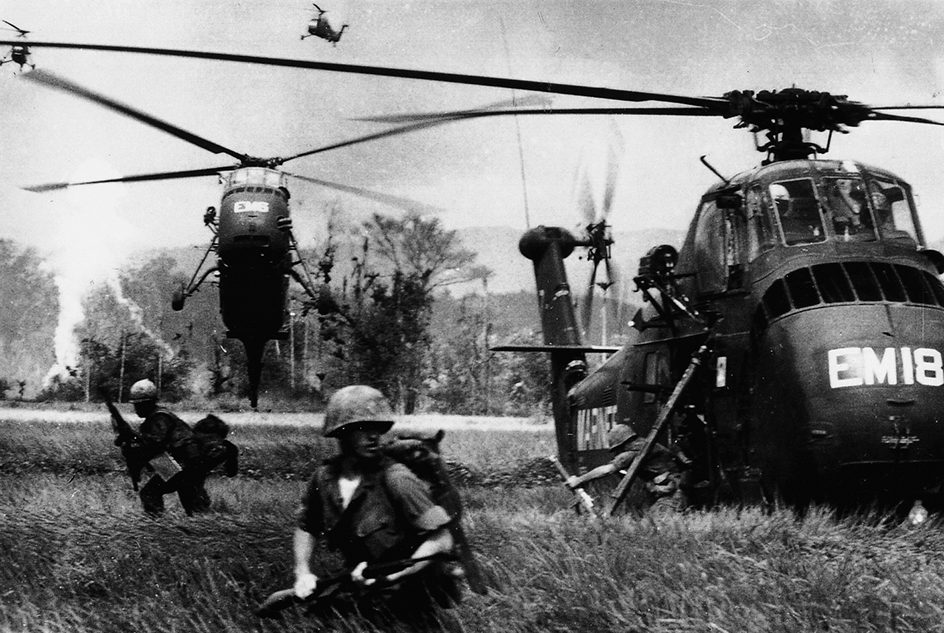
The United States used giant B-52 bombers as well as smaller planes for the main air strikes against the enemy. American pilots used helicopters to seek out Viet Cong troops in the jungles and mountains. Helicopters also carried the wounded to hospitals and brought supplies to troops in the field. 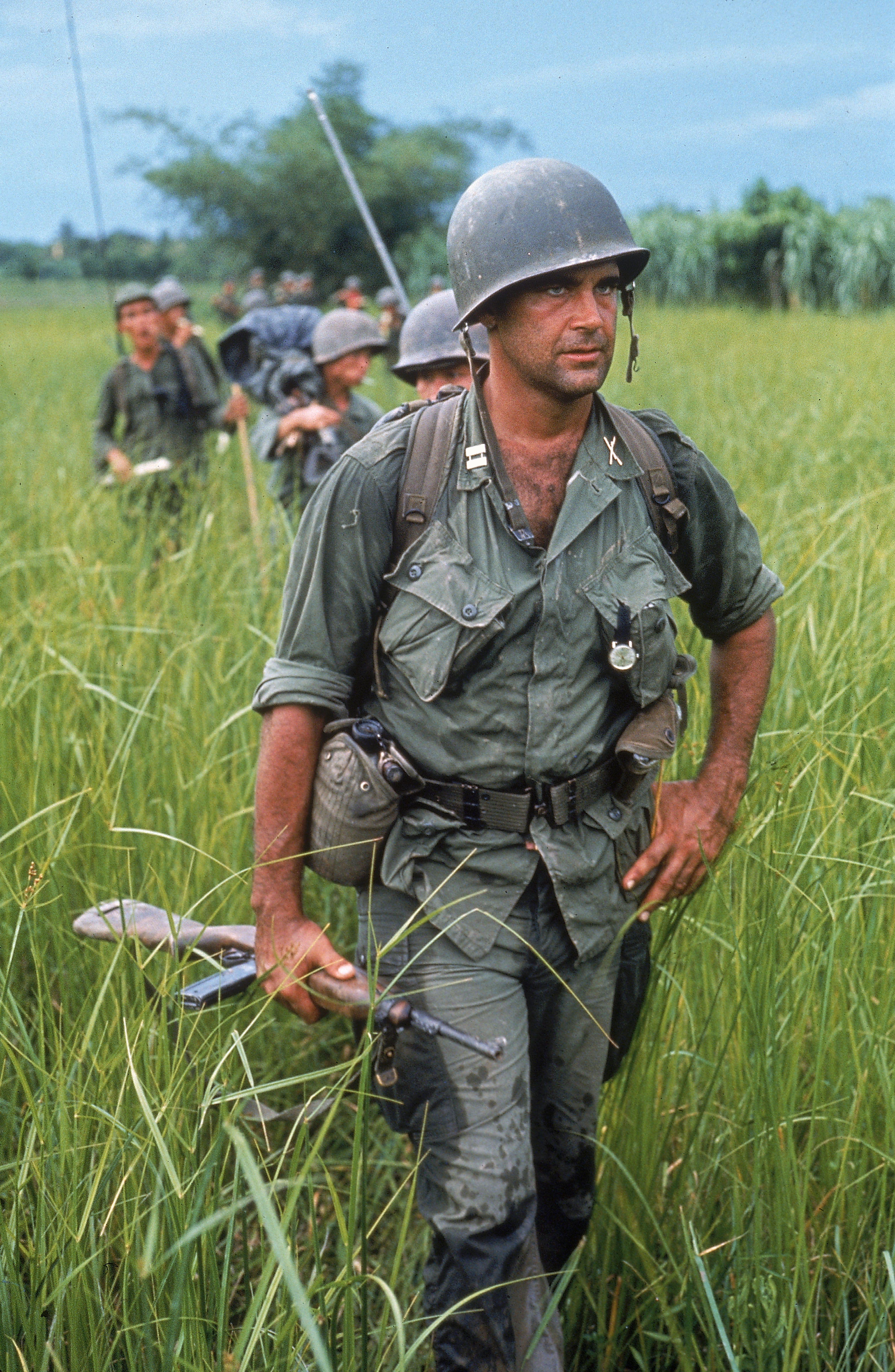
In contrast, Viet Cong and North Vietnamese leaders adopted a defensive strategy. Their more lightly armed troops relied on surprise and mobility. They tried to avoid major battles in the open, where heavy U.S. firepower could be decisive. The Viet Cong and North Vietnamese preferred guerrilla tactics, including ambushes and hand-laid bombs. Their advantages included knowledge of the terrain and large amounts of war materials from the Soviet Union and China.
Course of the war.
From 1965 to 1967, the two sides fought to a highly destructive draw. The U.S. bombing caused tremendous damage, but it did not affect the enemy’s willingness or ability to continue fighting. North Vietnam concealed its most vital resources, and the Soviet Union and China helped make up the losses.
American victories in ground battles in South Vietnam also failed to sharply reduce the number of enemy troops there. The U.S. Army and Marines usually won whenever they fought the enemy. But North Vietnam replaced its losses with new troops. Its forces often avoided defeat by retreating into Laos and Cambodia.
Reactions in the United States.
As the war dragged on, it divided many Americans into so-called hawks and doves. The hawks supported the nation’s fight against Communism. But they disliked Johnson’s policy of slow, gradual troop increases and urged a decisive defeat of North Vietnam. The doves opposed U.S. involvement and held mass protests. Many doves believed that U.S. security was not at risk. Others charged that the nation was supporting corrupt, undemocratic, and unpopular governments in South Vietnam. 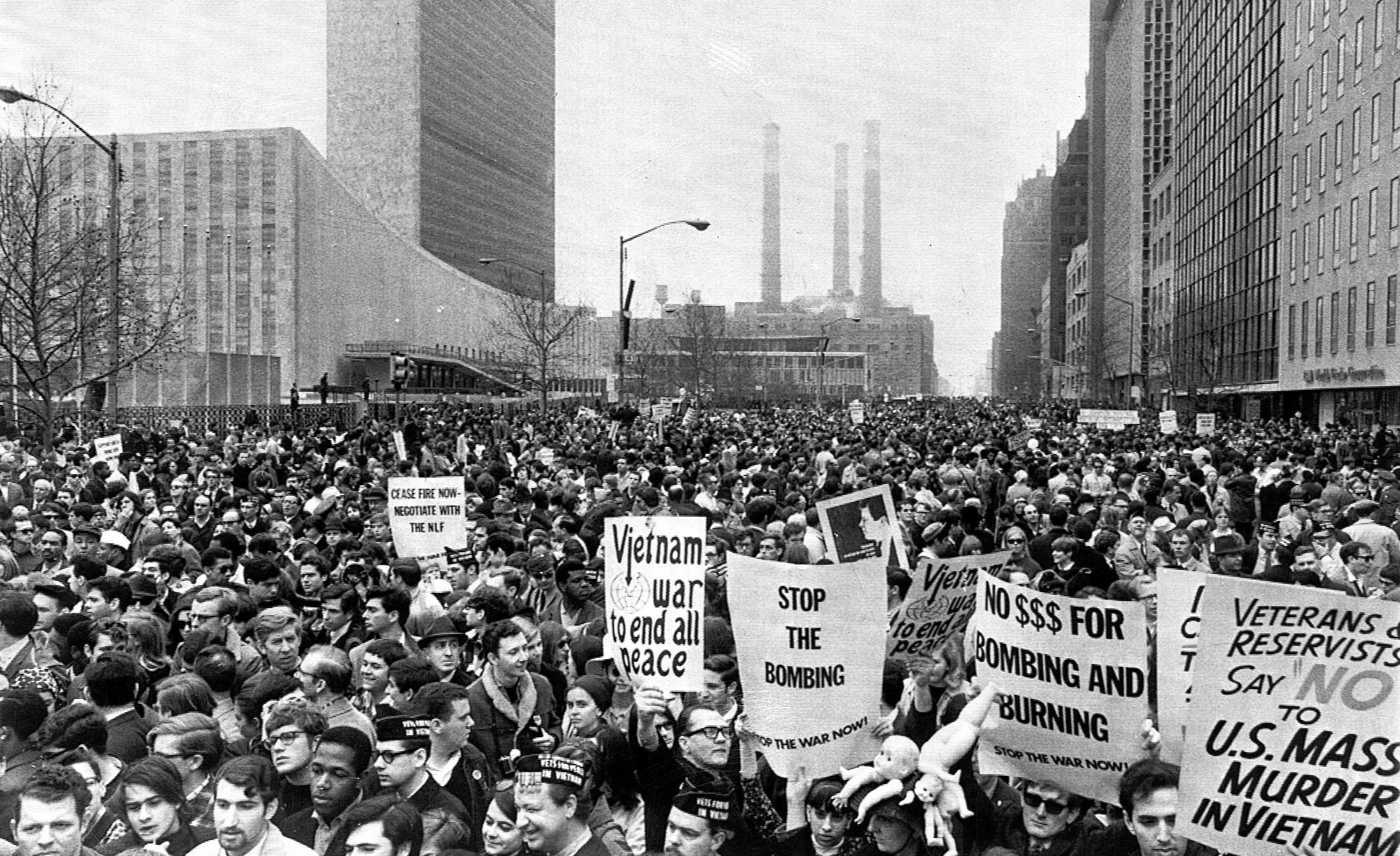
The growing costs of the war, however, probably did more to arouse public uneasiness in the United States than the antiwar movement did. By late 1967, increased casualties and Johnson’s request for new taxes helped produce a sharp drop in public support for the war.

The Tet Offensive.
North Vietnam and the Viet Cong opened a new phase of the war on Jan. 30, 1968, when they started to attack military bases and major cities of South Vietnam. The fighting was especially fierce in Saigon, South Vietnam’s capital, and in Hue. This campaign began the day before Tet, the Vietnamese New Year celebration. North Vietnam and the Viet Cong hoped the offensive would deal a serious blow to U.S. forces and make the South Vietnamese people lose faith in their government and rise against South Vietnamese leaders. They also hoped that the offensive would persuade U.S. officials to enter into peace negotiations with North Vietnamese leaders.
The plan failed to achieve these objectives. No widespread uprising of the population occurred in South Vietnam. In addition, the United States and South Vietnam quickly recovered their early losses, and the enemy suffered a huge number of casualties. But the Tet attacks stunned the American people and demoralized their war managers. Shortly before the offensive, the U.S. commander in the field, General Westmoreland, had assured the nation that the enemy had already been largely beaten. But the Tet offensive seemed to contradict this statement. As a result of the offensive, Johnson made a number of basic changes in his policies. He cut back the bombing of North Vietnam and rejected Westmoreland’s request for 206,000 additional troops. Johnson also called for peace negotiations and declared that he would not seek re-election in 1968. Peace talks opened in Paris in May. 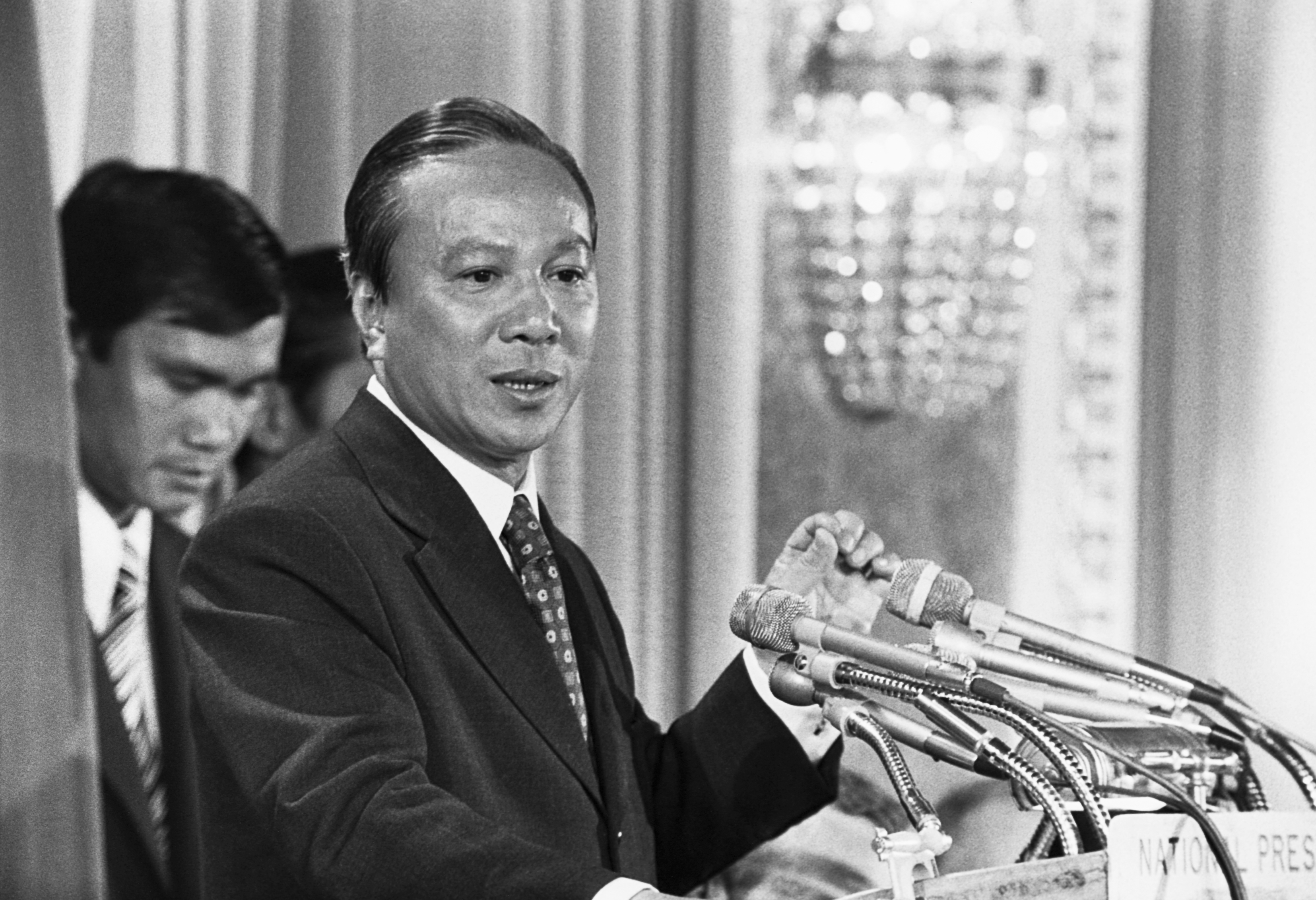
Vietnamization
The U.S. withdrawal begins.
The peace talks failed to produce agreement, and more and more Americans became impatient for the war to end. President Richard M. Nixon felt he had to reduce U.S. involvement in the conflict. On June 8, 1969, he announced a new policy known as Vietnamization. This policy called for stepped-up training programs for South Vietnamese forces and the gradual withdrawal of U.S. troops from South Vietnam. The U.S. troop withdrawal began in July 1969.
The invasion of Cambodia.
In April 1970, Nixon ordered U.S. and South Vietnamese troops to clear out military supply centers that North Vietnam had set up in Cambodia. Large stocks of weapons were captured, and the invasion may have delayed a major enemy attack. But many Americans felt the campaign widened the war. The invasion aroused a storm of protest in the United States, especially on college and university campuses.
The nation was shocked on May 4, 1970, when National Guard units fired into a group of demonstrators at Kent State University in Ohio. The shots killed four students and wounded nine others. Antiwar demonstrations and riots occurred on hundreds of other campuses throughout May. A move began in Congress to force the removal of the troops from Cambodia. On June 3, Nixon announced the completion of troop withdrawal. That same day, the Senate voted to repeal the Tonkin Gulf Resolution. These actions ended the Cambodian campaign.
Growing protest.
Opposition to the war in the United States grew rapidly during Nixon’s presidency. Many people claimed that this increased opposition was due to the news media, particularly television coverage, which brought scenes of the war into millions of homes. Most scholars have concluded, however, that media coverage reflected, rather than brought about, America’s growing opposition to the war.
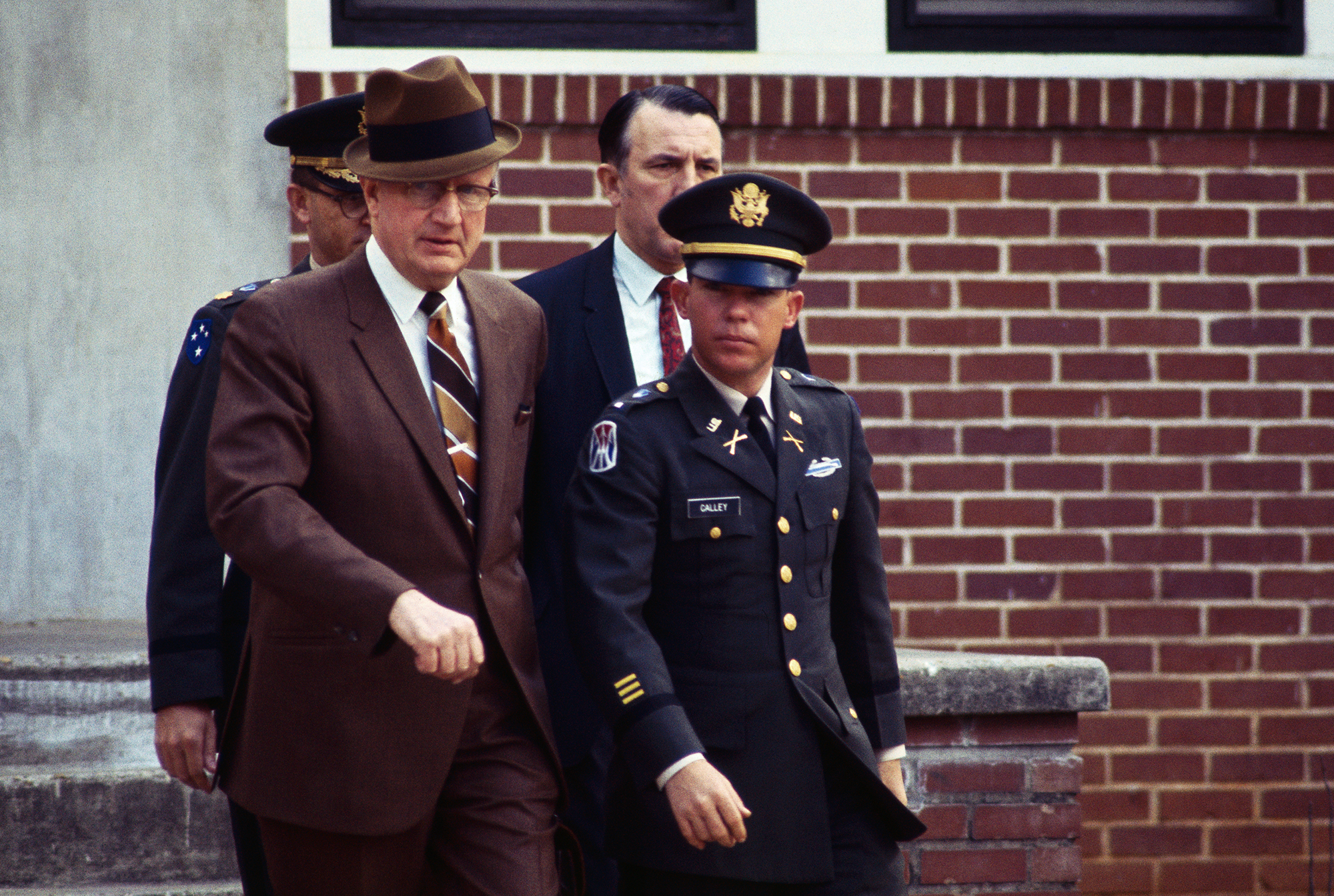
In March 1971, the conviction of Lieutenant William L. Calley, Jr., for war crimes raised some of the main moral issues of the conflict. Calley’s unit was part of the Army company that massacred hundreds of civilians in 1968 in the hamlet of My Lai in South Vietnam. All of those killed were unarmed women, children, and old men. None had offered any resistance to U.S. forces. Calley was found guilty of the murder of at least 22 Vietnamese and was sentenced to prison. He was paroled in 1974.
Some war critics used Calley’s trial to call attention to the large numbers of civilians killed by U.S. bombing and ground operations in South Vietnam. Others pointed to the vast stretches of countryside that had been destroyed by bombing and by spraying of chemicals. United States forces used such weedkillers as Agent Orange to reveal enemy hiding places in the jungle and to destroy enemy food crops (see Agent Orange ).
Public distrust of the U.S. government deepened in June 1971, when newspapers published a secret government study of the war called The Pentagon Papers. This study raised questions about decisions and secret actions of government leaders regarding the war.
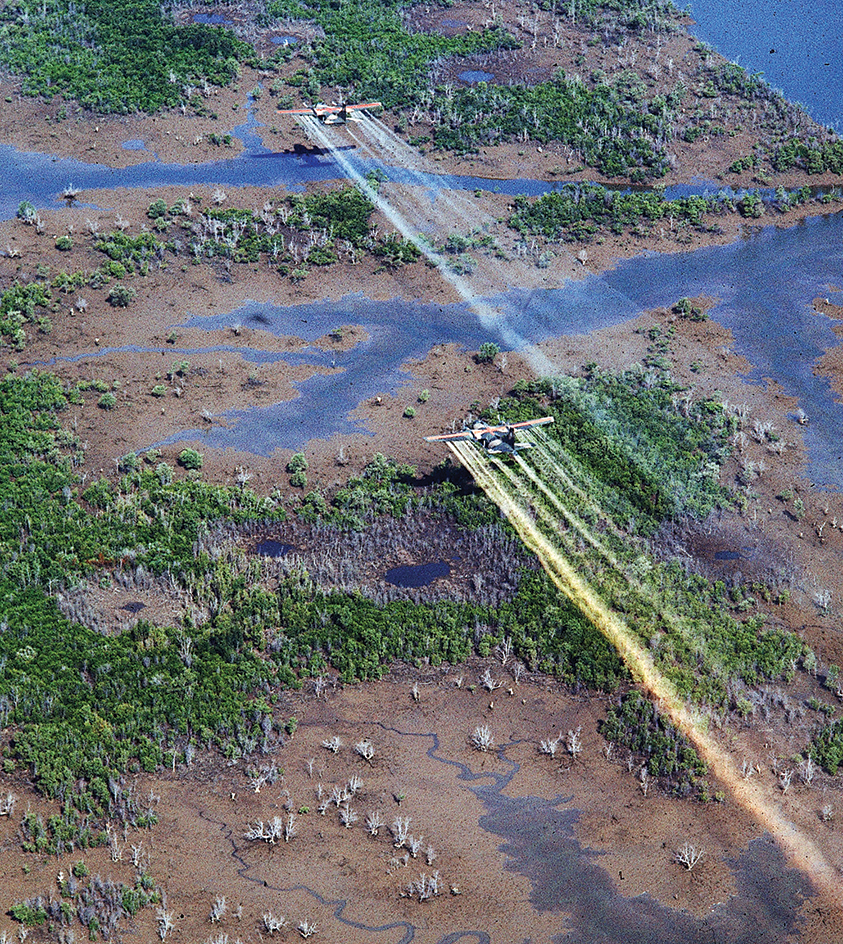
Invasion of the south.
In March 1972, North Vietnam began a major invasion of South Vietnam. Nixon then renewed the bombing of North Vietnam and used American airpower against the exposed formations of regular enemy troops and tanks. He also ordered the placing of explosives in the harbor of Haiphong, North Vietnam’s major port for importing military supplies. These moves helped stop the invasion, which had nearly reached Saigon by August 1972.
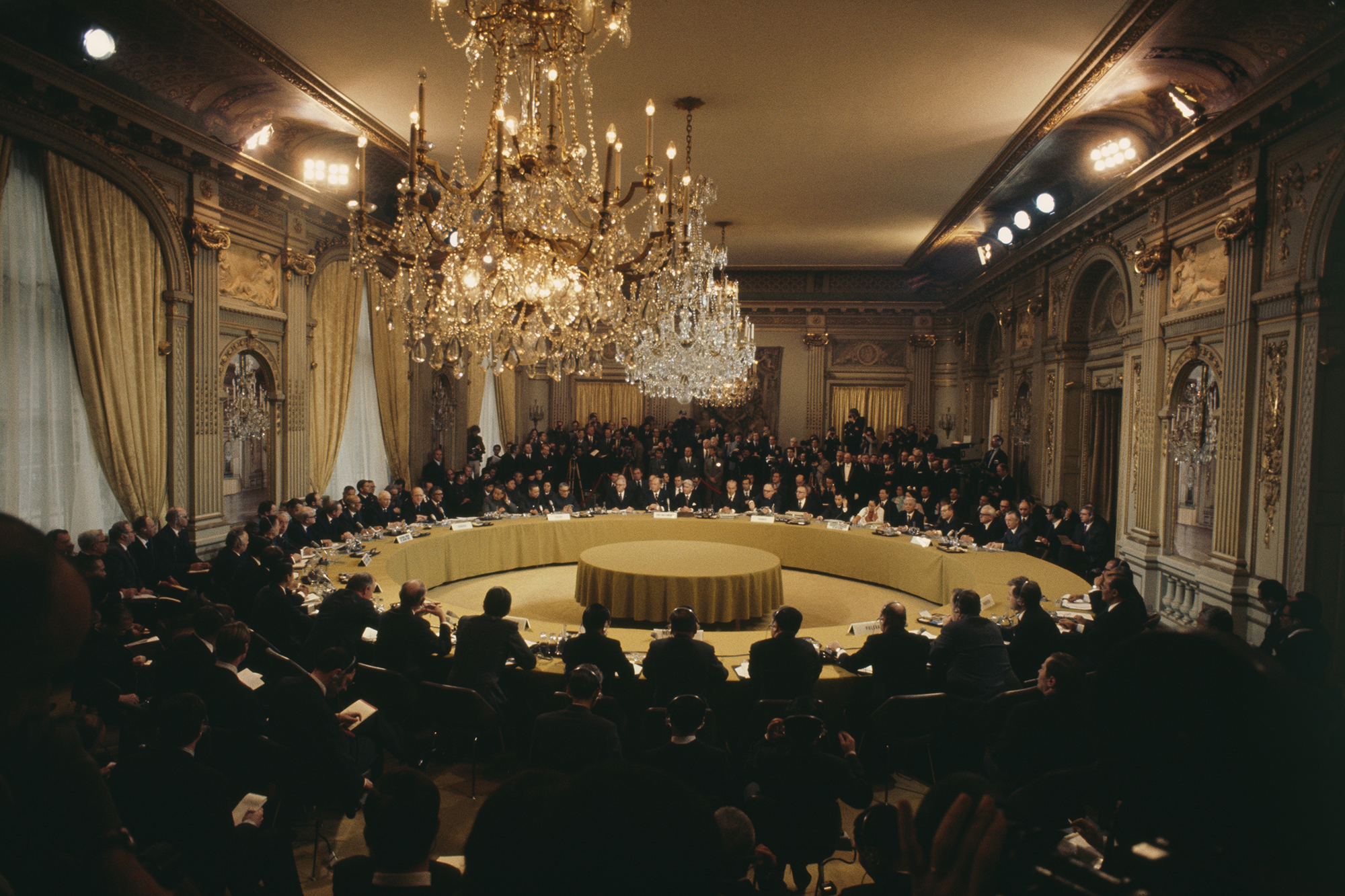
The high cost paid by both sides during the 1972 fighting led to a new round of peace negotiations. The talks were conducted by Henry A. Kissinger, Nixon’s chief foreign policy adviser, and Le Duc Tho of North Vietnam. On Jan. 27, 1973, a cease-fire agreement was signed in Paris by the United States, South Vietnam, North Vietnam, and the Viet Cong. The pact provided for the withdrawal of all U.S. and allied forces from Vietnam and for the return of all prisoners—both within 60 days. It also permitted North Vietnam and the Viet Cong to leave their troops in the south. In addition, it called for internationally supervised elections that would let the South Vietnamese decide their political future.
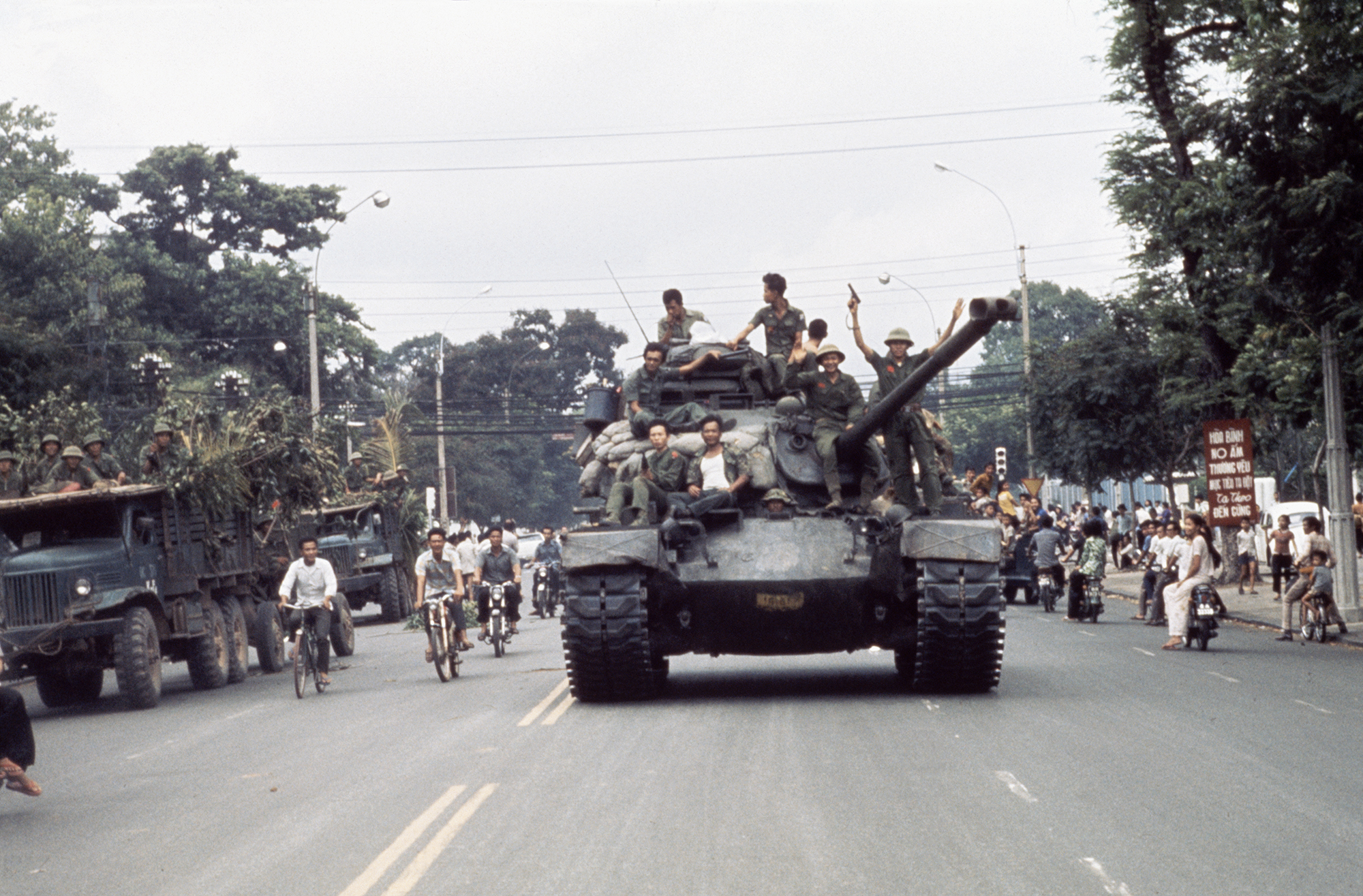
The end of the war.
On March 29, 1973, the last U.S. ground forces left Vietnam. But the peace talks soon broke down, and the war resumed. Congress, responding to voters who wished to see an end to the war, opposed further U.S. involvement. As a result, American troops did not return to the war. In mid-1973, Congress began to reduce military aid to South Vietnam. 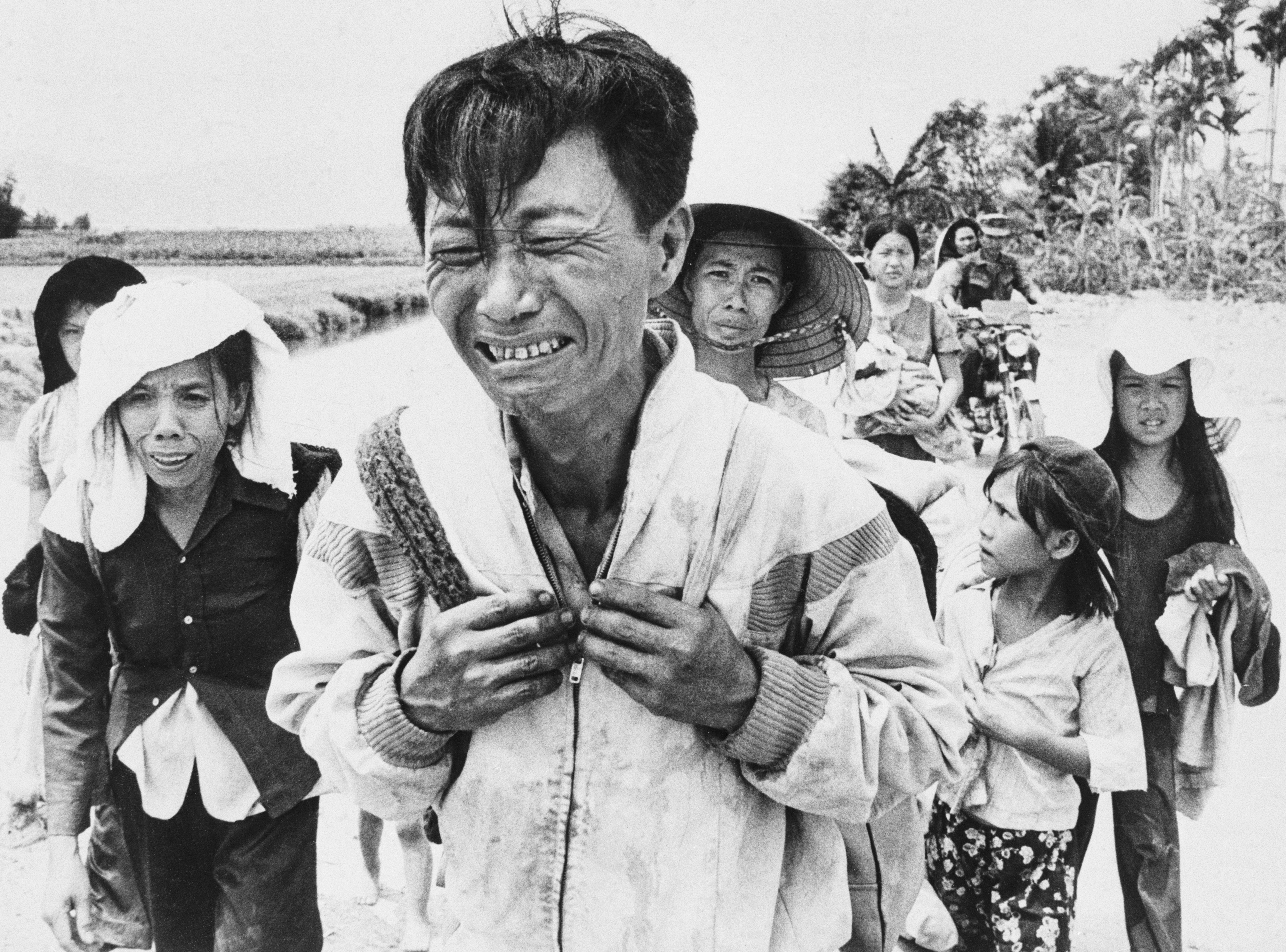
In late 1974, North Vietnamese and Viet Cong troops won an easy victory when they attacked Phuoc Long, northeast of Saigon. In March 1975, the North Vietnamese forced South Vietnamese troops into a retreat from a region known as the Central Highlands. Thousands of civilians—many of them families of the South Vietnamese soldiers—also fled and died in the gunfire or from starvation. This retreat became known as the Convoy of Tears. Although some South Vietnamese army units fought on, few soldiers or civilians rallied in support of the failing South Vietnamese government.
Early in April, President Gerald R. Ford asked Congress for $722 million in military aid for South Vietnam. But Congress, believing defeat was now inevitable, provided only $300 million in emergency aid. The money was mainly for the evacuation of Americans from Saigon, which was threatened by rapidly advancing enemy troops. The war ended on April 30, 1975, when these troops entered Saigon and the South Vietnamese government formally surrendered to them. Saigon was then renamed Ho Chi Minh City.

Results of the war
Casualties and destruction.
About 58,000 American military personnel died in the war. About 300,000 others were wounded. South Vietnamese military losses were approximately 224,000 killed and 1 million wounded. North Vietnamese and Viet Cong losses totaled about 1 million dead and 600,000 wounded. Countless numbers of civilians in North and South Vietnam also perished.
The U.S. bombing in the conflict was more than three times as great as the combined U.S.-British bombing of Germany in World War II. The American air strikes destroyed much of North Vietnam’s industrial and transportation systems. But South Vietnam, where most of the fighting took place, suffered the most damage. The war made refugees of as many as 10 million South Vietnamese. The bombing and the use of chemicals to clear forests scarred the landscape and may have permanently damaged much of South Vietnam’s cropland and plant and animal life.

Other effects in Southeast Asia.
In 1976, North and South Vietnam were united into a single nation, which was renamed the Socialist Republic of Vietnam. North Vietnamese leaders then forced their own rigid political culture on people of the south. They imprisoned thousands who had held positions of responsibility in the South Vietnamese army or government. They also waged a campaign against independent businesses, run mainly by Vietnamese merchants of Chinese descent. As a result, over 1 million Vietnamese fled Vietnam between 1975 and the early 1990’s, and the economy stagnated. But the harsh social divisions between rich and poor were ended, and literacy rates soared. 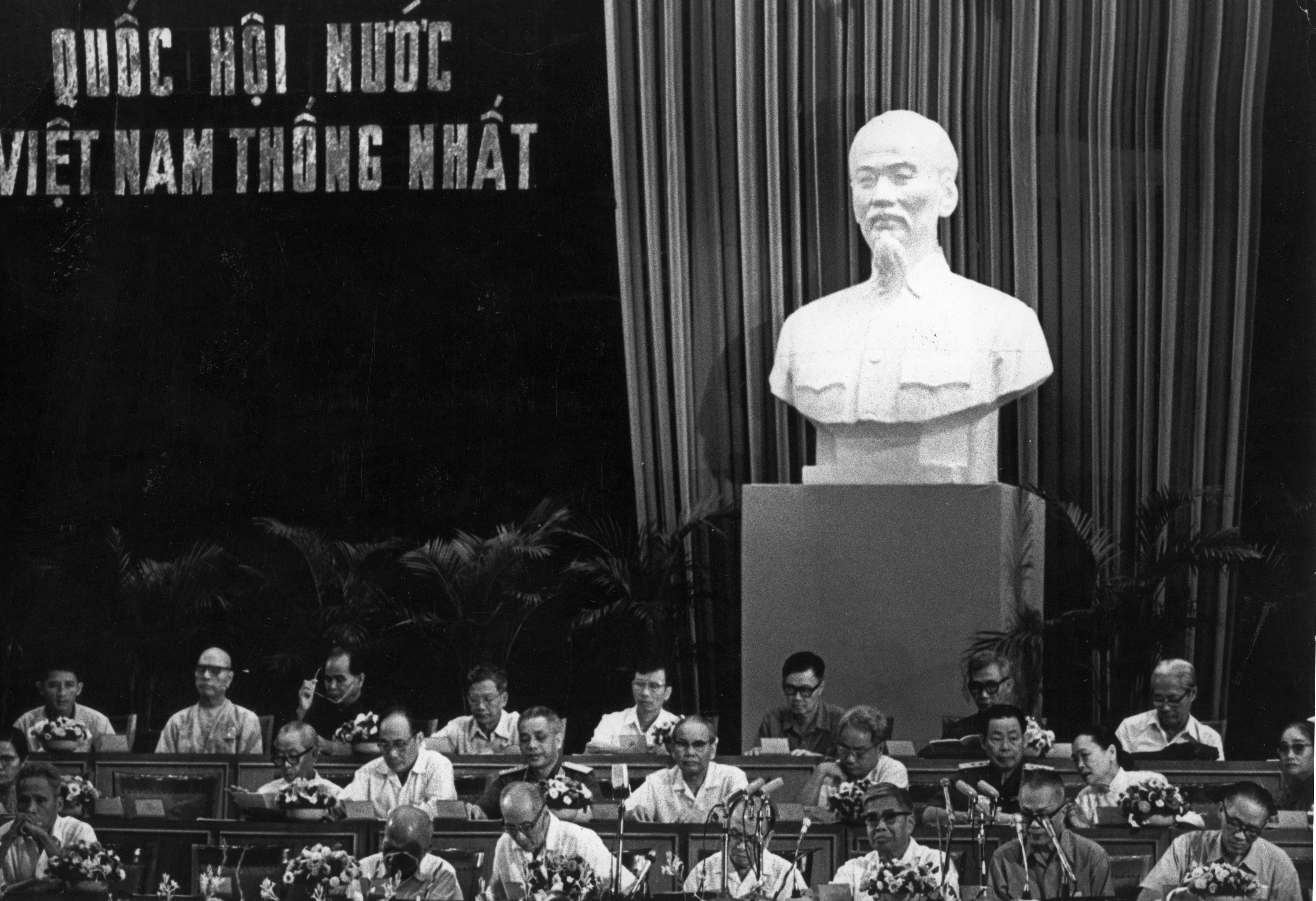
North Vietnam had helped establish Communist governments in Laos and Cambodia in 1975. However, the anti-Vietnamese policies of the pro-Chinese Communist Khmer Rouge movement in Cambodia forced Vietnam into a lengthy and costly campaign in that country. China reacted to this evidence of Vietnam’s growing influence in the region by briefly invading Vietnam in 1979. 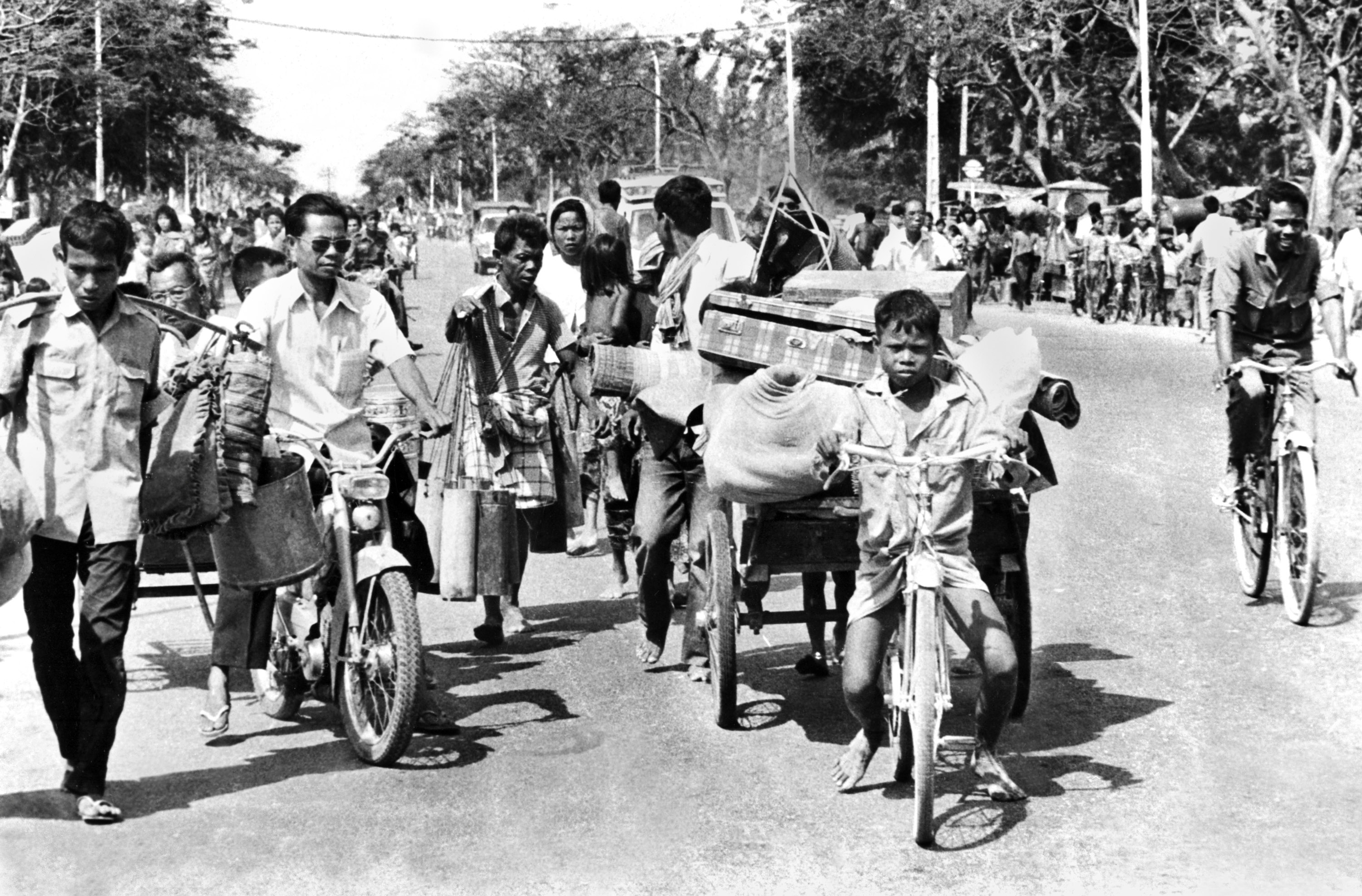
Effects in the United States.
The Vietnam War also had far-reaching effects in the United States. The United States spent about $200 billion on the war. Many experts believe that this high cost of the war damaged the U.S. economy for years after the war’s conclusion.
The Vietnam War was the first foreign war in which U.S. combat forces failed to achieve their goals. This failure hurt the pride of many Americans and left bitter and painful memories. The Americans most immediately affected included the approximately 2,600,000 men and women who had served in the war, and their families. Most veterans adjusted smoothly to civilian life. But others, particularly those with psychological problems associated with combat stress, encountered difficulties in making the adjustment to postwar American society. These veterans suffered from high rates of divorce, drug abuse, unemployment, and homelessness.
After World Wars I and II, the country viewed its soldiers as heroes. Americans who opposed the U.S. role in Vietnam had embraced those veterans who joined the antiwar movement upon their return from the battlefield, but some criticized or shunned those veterans who felt the war was justified. Many Americans who supported the war came to regard Vietnam veterans as symbols of America’s defeat. Some leading hawks opposed expanding benefits to Vietnam veterans to match those given to veterans of earlier wars. These reactions shocked the veterans. Many of them felt that the nation neither recognized nor appreciated their sacrifices.
After the war, Congress and the public became more willing to challenge the president on military and foreign policy. The war also became a standard of comparison in situations that might involve U.S. troops abroad.
Today, Americans still disagree on the main issues and lessons of the war. Some believe U.S. participation was necessary and just. Many of these people say the war was lost because the United States did not use its full military power and because opposition at home weakened the war effort. Others point to the failure of the South Vietnamese government to develop popular support and to its overreliance on the United States. Still others view U.S. involvement as immoral and unwise. Some of them feel U.S. leaders made the war a test of the nation’s power and leadership. Some view the conflict as a civil war that had no importance to U.S. security. Since Vietnam, many Americans have argued that the nation should stay out of wars that do not directly threaten its safety or vital interests.
